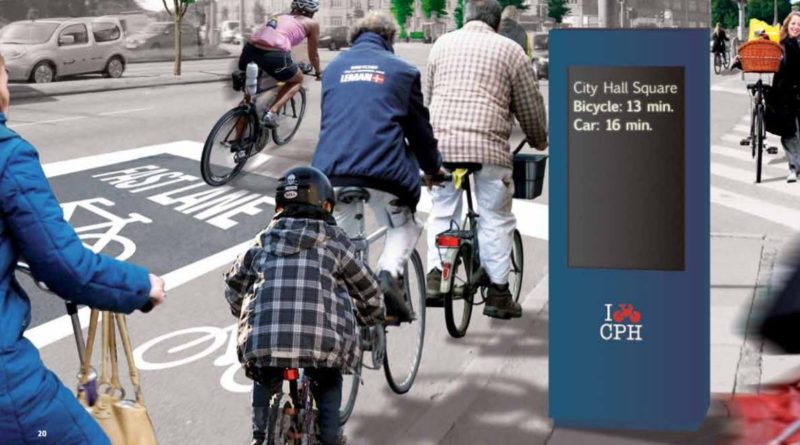Copenhagen’s cycle stats continue to rise with investment in safe network
Already admired around the globe as a leader in building for cycle culture, Copenhagen’s active travel stats continue to improve; some 62% of citizens are now said to choose the bicycle for trips to work or education. 
Detailed in the 2017 Annual Bicycle Report (In Danish only at present), new figures gathered by the city’s various data collectors show that locals cycled 1.4 million kilometres on an average weekday, a stat that has grown 22% since 2006. As a total number of trips, cycling’s modal share hasn’t dipped below 30% since 1998.
A pairing of safety in numbers and dedicated safe cycling infrastructure has made for a high level of satisfaction among citizens; some 97% of cyclists claimed to be very happy with cycling conditions. When it comes to safety, relative risk of having an accident has reduced by 23% and “feeling of safety” increased by 43%.
Further investment in the city’s cycling infrastructure, in particular in bridges linking key neighbourhoods, have delivered strong performance. In two years the Langebro Bridge, Bryggebridge and Cykelslandgen Bridge have all seen increases in cycle traffic, up 21%, 65% and 80%, respectively. Furthermore, a new Inner Harbour Bridge – forming part of the ‘Harbour Circle 13km bike and pedestrian route – delivered over 17,000 cyclists in the three months after its grand opening.
But why do Copenhageners cycle? Quite simply, it’s considered to be faster; 48% of city cyclists say that their main reason to cycle is speed from A to B.

The report doesn’t encourage the city to rest on its laurels. Towards its conclusion it encourages investment into 23 new infrastructure projects for cycling, likely to cost in the region of €33 million.
Copenhagen’s strategy document leading to 2025 has ambitions to grow the number of daily bicycle trips by an additional 60,000 to 240,000. To do this proposals are being put forward to widen key arteries through the city to up capacity.



